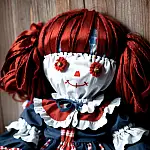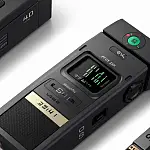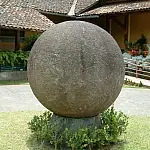Shrunken Heads Shrunken heads are real human heads ritually prepared for spiritual protection and intimidation by the Shuar Indians along the Amazon river.
Head-hunting occurred in many regions of the world, but the practice of head shrinking has only ever been recorded in the north-western region of the Amazon rain forest by the Shuar Indians. Among the Shuar, a shrunken head is known as a tsantsa.
The practice of making shrunken heads originally had religious significance; the heads were believed to harness the spirits of those enemies and compel them to serve the shrinker. In more recent years, collectors and tourists have traded firearms for shrunken heads increasing demand and fuelling inter-tribe warfare.
After World War II, the shrunken head of a Polish prisoner was found at the Buchenwald concentration camp, where it was displayed in the camp centre to terrify the prisoners.
The Spiritual Purpose Behind Shrunken Heads
Shrunken heads were made from enemies who were decapitated on the battlefield. The heads were shrunk in a belief that they would protect the victor from evil spirits. Immediately following a battle the head of a fallen enemy was taken as a trophy, indicating that the maker had properly fulfilled the obligation to his lineage in taking blood revenge.
The Shuar believe in the existence of three fundamental spirits; Wakani innate to humans thus surviving their death, later turning into vapour; Arutam, literally "vision" or "power," protects humans from a violent death and assures their survival and Muisak a vengeful spirit, which surfaces when an Arutam spirit-carrying person is murdered.
To block the last spirit from using its powers, they sever their enemy's heads and shrink them. It also served as a way of warning enemies.
How Shrunken Heads Are Made
The shrunken heads were created by first removing the skull through an incision in the back of the severed head. Fat from the flesh of the head is removed and a wooden ball is placed inside to maintain the form. The eyelids are sewn shut and the mouth is held shut with splinters. The flesh is boiled in water with a mixture of herbs containing tannins and then dried using hot pebbles and sand. During the drying process, the head can be moulded and shaped accordingly. The skin is then rubbed down with charcoal ash to keep the Muisak from seeping out. Decorative beads are added to the head and the lips are then sewn shut and decorated with beads and ribbons.
The whole process is governed by strict rituals and feasts which last around one week. The head would be worked on every day, on the way back to the warrior's village. The final stages are performed a few hours from the village, where the final feast will be performed.
The Jivaro Indians were preoccupied with realism and the utmost care was taken to maintain the likeness of the slain victim's face. The facial distortion and shrinkage of the lateral sides of the forehead are artefacts of the shrinking process.
Shrunken Heads for Sale

The ritual of head shrinking wasn't particularly common, however, when westerners created an economic demand for shrunken heads there was a sharp increase in the rate of killings to supply collectors and tourists. Guns were usually what the Shuar acquired in exchange for their shrunken heads, the rate being one gun per head. But weapons were not the only items exchanged; during the 1930s, when heads were freely exchanged, a person could buy a shrunken head for about twenty-five dollars.
As early as the 1870's people in Colombia and Panama, unconnected to the Javaros, began to make counterfeit tsantsas encouraged by this trade. They would use corpses from morgues, or the heads of monkeys or sloths. Some even used goatskin. Today it is estimated that up to 80 per cent of shrunken heads are fakes.
Shrunken Heads at Pitt Rivers Museum
While the largest collection of tsantsa can be found in Ecuador, there are several museums in Europe and the USA which have shrunken heads in their collections. Very few museums now show shrunken heads, or any human remains, to the public.
The shrunken heads in the Pitt Rivers Museum were acquired between 1884 and 1936 from five different collectors and have been on display until 2020. The decision was taken to remove the shrunken heads from public display because it was felt that the way they were displayed did not sufficiently help visitors understand the cultural practices related to their making and instead led people to think in stereotypical and racist ways about Shuar culture.












